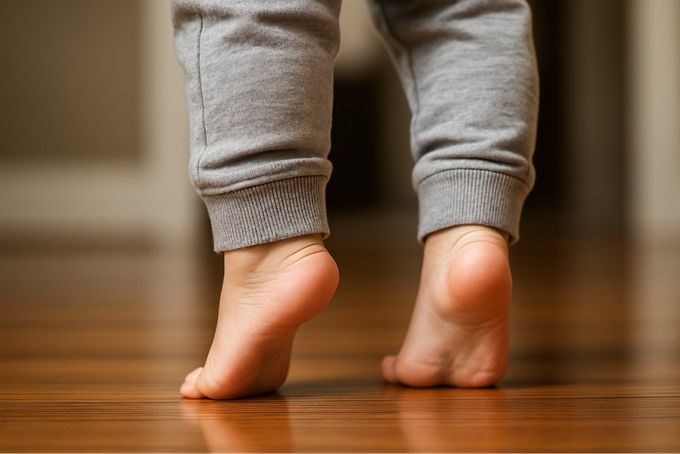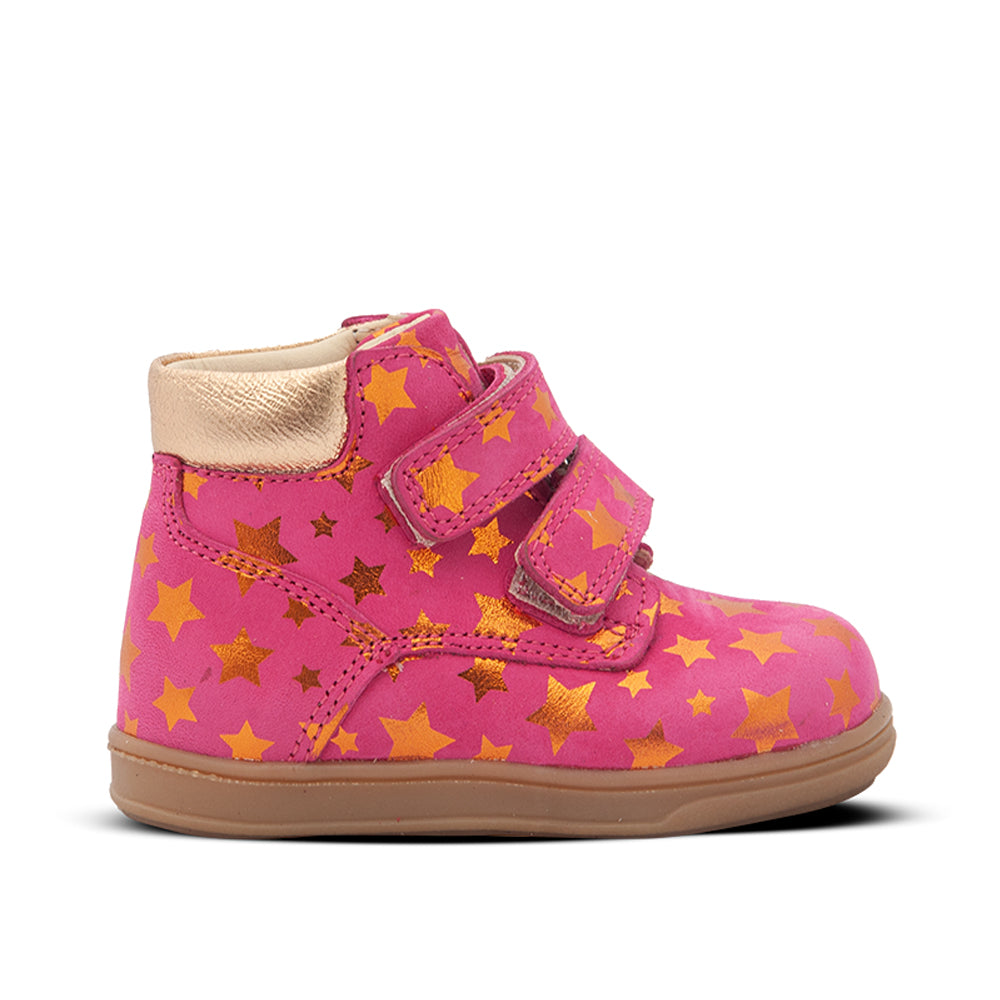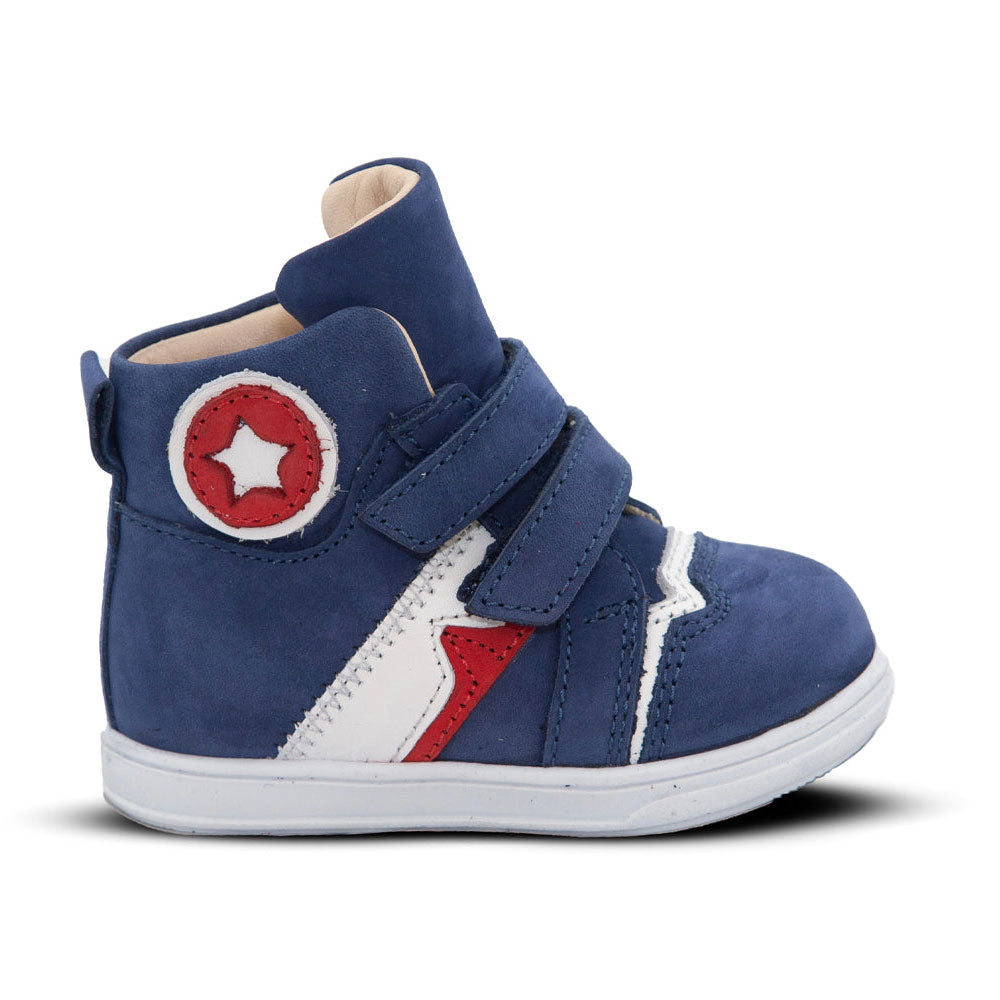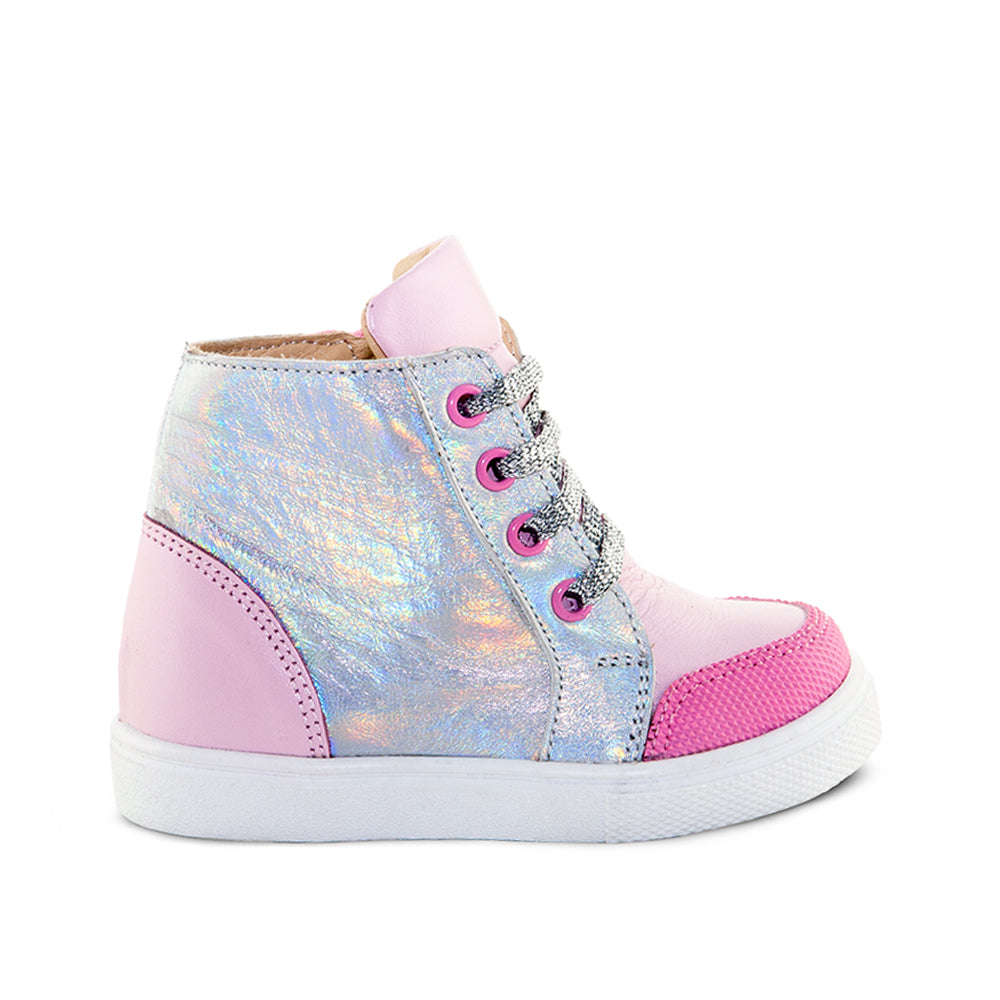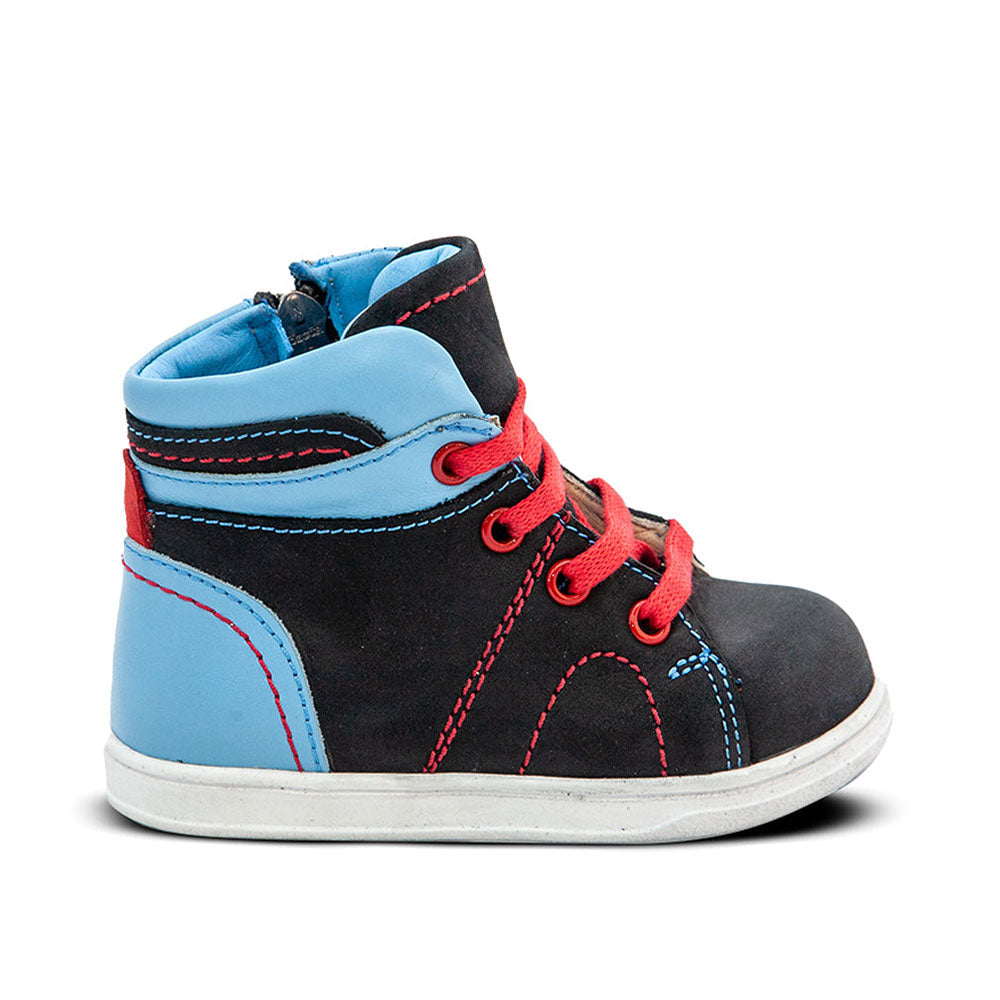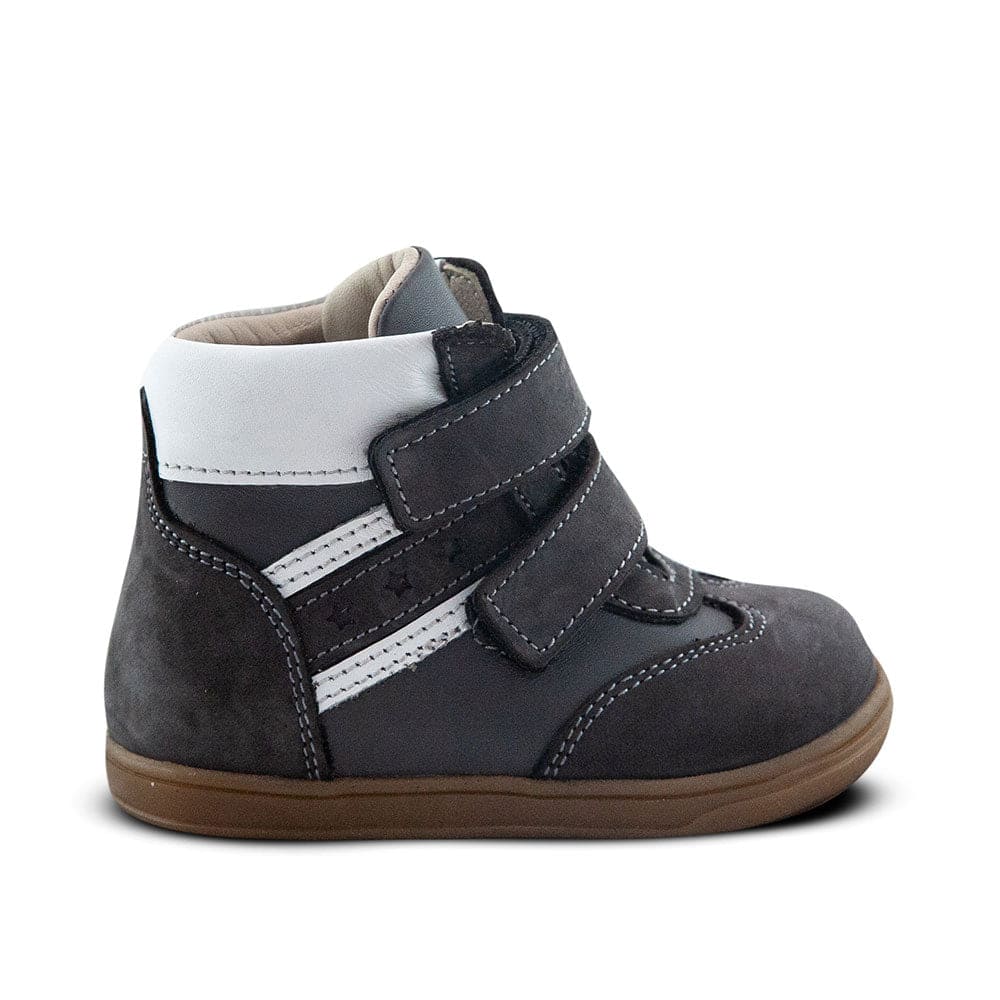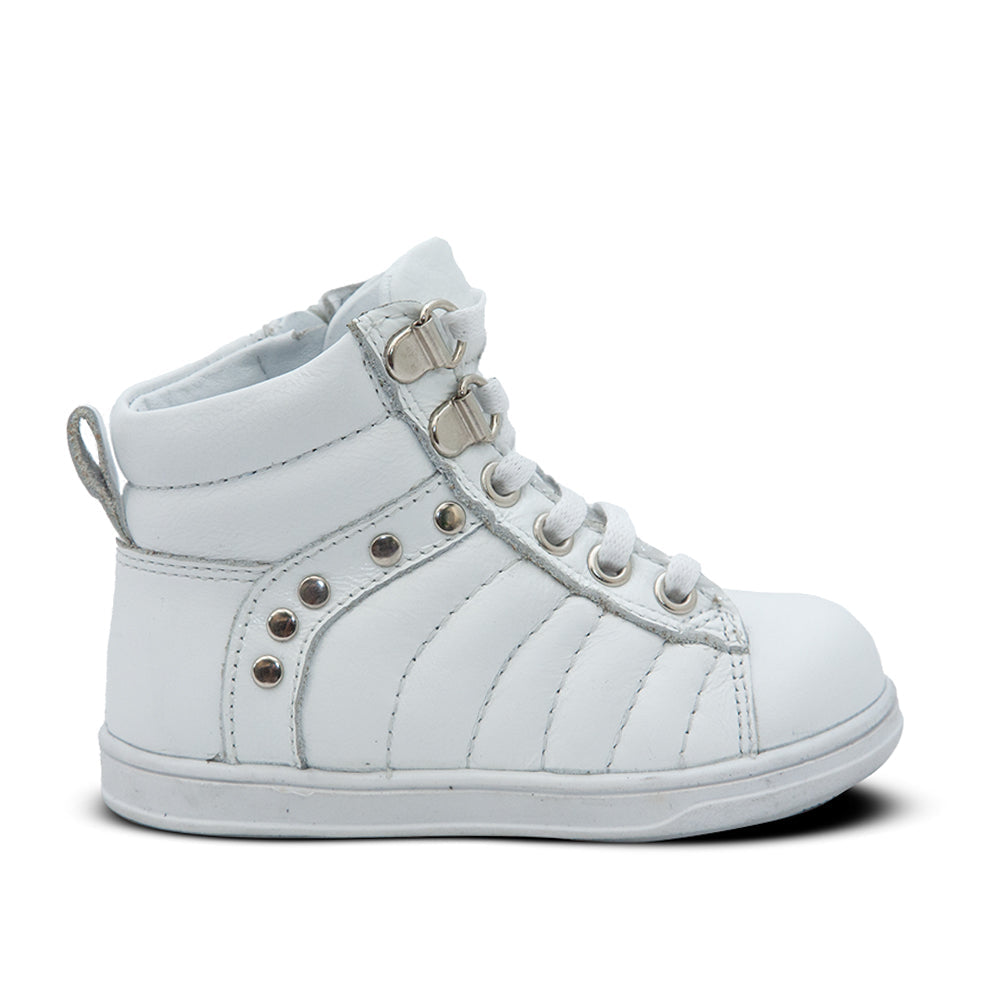Toe Walking in Kids: Common Causes and What You Need to Know
Toe walking is normal for toddlers learning to walk, but becomes concerning if it persists beyond age 2-3 years. Physical therapy, proper footwear, and addressing underlying causes produces the best outcomes for developing healthy walking patterns.
Updated July 21, 2025

Your toddler bounces around the house like a tiny ballerina. Maybe you noticed it first when your baby started tip-toeing across the floor. Now, every step lands on their toes, and no heel touches the ground.
Sound familiar?
If you're watching your child walk this way, you're not alone. Many parents notice their kids walking on their toes and wonder if something's wrong.
The short answer? It depends.
» Is your little one learning to walk? Explore the best shoes for first walkers
When Toe Walking Is Normal (And When It's Not)
Most babies start walking on their toes. It's part of learning balance and coordination. Think of it as training wheels for walking. Your child is likely fine if they can walk flat‑footed when asked, hit other developmental milestones, and show no signs of muscle tightness or coordination problems.
When Should I Worry About My Kid's Toe Walking?
You should worry if your child continues to walk on their toes after age 2–3, can’t walk flat-footed when asked, or shows signs of stiffness or coordination problems.
» Toddler walking in a wide-legged stance? Find out what it means
When Do Children Stop Toe Walking Naturally?
Studies reveal encouraging news about toe walking. Research following children who walked on their toes before age 5.5 found [1]:
- 59% stopped toe walking by age 5.5
- 79% resolved the pattern by age 10
Children who naturally outgrow toe walking by age five often can walk heel‑to‑toe when asked, show normal neurological function, and maintain ankle flexibility without stiffness.
But little ones who continue to walk past age 5 often need medical help. These cases typically involve underlying conditions that require professional treatment.
» Find out if your little one needs shoes while learning to walk
Signs That Toe Walking May Be a Problem
Toe walking isn't just about how your child's feet hit the ground. Watch for these subtle indicators:
Developmental Markers:
- Delays in gross motor skills development (running, jumping, climbing)
- Speech delays combined with toe walking
- Fine motor challenges (trouble with buttons, zippers, or writing)
Healthcare providers look for these patterns because they often cluster together. A kid with persistent toe walking can show delays in multiple areas.
Physical Signs:
- Limited ankle movement (your child's foot won't bend up toward their shin)
- Tight calf muscles that feel rigid when touched
- Poor balance or frequent stumbling
- Difficulty squatting down or getting up from the floor
» Learn how preschoolers develop their gross motor skills
What Causes Toe Walking?
Habitual Toe Walking
Most toe walking in kids is habitual. Your child simply got used to walking this way. They have no underlying medical condition. Their muscles and nerves work fine.
When there's no structural or neurological cause, doctors may call it idiopathic toe walking [2]. This type of toe walking is a diagnosis of exclusion. Doctors rule out other causes first. Then they focus on changing the walking pattern through therapy and exercises.
The long-term effects of untreated habitual toe walking include:
- Changes in foot arch structure
- Increased back curve leading to tight hamstrings
- Poor posture and muscle imbalances
- Higher risk of falls and injuries
Neurological Conditions
Some neurological conditions cause toe walking as a symptom. Spastic cerebral palsy affects movement and posture, where tight calf muscles pull the heel up [3].
The child can't put their heel down even if they try. Without treatment, the leg muscles shorten permanently. This creates lasting walking problems and muscle imbalances throughout the body.
» Find out why your baby's feet might stink
Muscular Dystrophy
Muscular dystrophy causes progressive muscle weakness [4]. Children with Duchenne muscular dystrophy often develop toe walking as their leg muscles weaken. They shift their weight forward to compensate for weak thigh muscles. This leads to hip contractures and spinal problems over time.
Autism Spectrum Disorder
Toe walking appears in 20-45% of children with autism [1,5]. The connection isn't fully understood, but researchers believe it relates to sensory processing differences.
- Children with autism who toe walk often show:
- Difficulty with social interaction
- Language delays
- Sensory sensitivities
- Repetitive behaviors
The toe walking might be their way of managing overwhelming sensory input or seeking specific sensations.
» Find the best places to buy orthopedic shoes and support your kid's feet
Musculoskeletal Problems
Physical constraints can force children to walk on their toes.
- A tight Achilles tendon might sometimes lead to an equinus deformity, which can mechanically force a child to toe walk and may result in permanent foot changes without treatment [6].
- Clubfoot is a birth defect where the foot points inward and downward. Children with untreated clubfoot often walk on the side or top of their foot. This creates lasting gait problems and limits mobility [7].
- High-arched feet can make heel walking uncomfortable. Children might walk on their toes to avoid pain or maintain balance.
Sensory Processing Issues
When children have sensory processing disorder and toe walking, they may avoid heel contact to reduce sensory overload, especially on textures like carpet or tile [8]. Putting their heels on the ground feels unpleasant or overwhelming.
📌 Research on sensory processing and toe walking is limited. Only a few studies suggest a connection [8]. But many therapists report seeing this pattern in their practice.
Children with sensory-related toe walking often show:
- Lower vibration thresholds (they feel vibrations more intensely)
- Balance problems
- Motor planning difficulties
- Higher rates of falls during balance challenges
» Find out when your baby can start wearing soft-bottom shoes
What If Your Child Walks On Their Toes Occasionally?
Many children toe walk inconsistently. They might walk normally most of the time, but switch to toe walking during play or when barefoot.
This pattern usually suggests:
- Habitual Behavior: Your child learned to toe walk in certain situations and continues out of habit.
- Balance Exploration: Young children still developing coordination might toe walk when they need extra stability.
- Sensory Preferences: Some children dislike certain floor textures and toe walk to minimize contact.
- Emotional Triggers: Stress, excitement, or anxiety can trigger toe walking in some children.
Inconsistent toe walking is generally less concerning than constant toe walking. But it's worth monitoring and discussing with your pediatrician.
Does Toe Walking Ever Help?
In very young children, toe walking might offer some benefits. It can:
- Help develop balance and coordination
- Strengthen lower leg muscles
- Provide the sensory input they need
But these potential benefits only apply to very young children who are still learning to walk. Persistent toe walking beyond age 2-3 offers no advantages and can create problems.
» Explore the relationship between knock knees and height in kids
Toe Walking Treatment for Toddlers and Older Children
Treatment depends on the underlying cause and severity.
Conservative Approaches Include:
- Physical therapy, especially gait training focused on heel‑to‑toe walking, along with calf‑strengthening and sensory desensitization activities, supports normal gait development.
- Occupational therapy for sensory issues
- Gait training to practice heel-to-toe walking
- Sensory desensitization activities
- Using ankle‑foot orthoses (AFOs) for toe walkers can help maintain a neutral foot position, support heel‑strike walking, and promote proper motor coordination.
Surgical Options Might Be Necessary for:
- Severe Achilles tendon tightness
- Structural foot deformities
- Cases that don't respond to conservative treatment
Early intervention produces better outcomes. The younger your child is when treatment starts, the more likely they are to develop normal walking patterns.
» It's getting hotter! Discover the best summer shoes for first walkers
What Toe Walking Means for Your Little One
Most children who toe walk will outgrow it naturally or respond well to treatment. The key is identifying persistent cases early and addressing underlying causes.
Toe walking becomes problematic when it continues past the toddler years, especially if your child can't walk flat-footed when asked. Multiple factors influence whether toe walking resolves naturally, including when it started, ankle flexibility, developmental progress, and muscle tone.
The good news? With proper assessment and treatment, most children develop healthy walking patterns. Physical therapy, appropriate footwear, and sometimes bracing can guide your child toward normal gait development.
Speaking of footwear, choosing the right shoes plays a crucial role in supporting proper foot development. First Walkers specializes in shoes designed specifically for developing feet, with features that encourage healthy walking patterns and provide the support growing children need.
References:
- M. Camia, “Toe walking in children and adolescents with autism spectrum disorder: relationship with sensory and motor functions,language, cognition, and autism severity,” Research in Autism Spectrum Disorders, Available: https://www.sciencedirect.com/science/article/pii/S1750946724001326
- L. M Shulman MD, “Developmental implications of idiopathic toe walking,” Journal of Pediatrics, Available: https://www.jpeds.com/article/S0022-3476(97)70236-1/fulltext
- Cerebral Palsy Guide, “Cerebral palsy toe walking: What causes it, and can it be treated?,” Cerebral Palsy Guide, Jul. 15, 2024. Available: https://www.cerebralpalsyguide.com/blog/toe-walking-in-children-with-cerebral-palsy/
- “Muscular dystrophy,” Physiopedia. Available: https://www.physio-pedia.com/Muscular_Dystrophy
- “Autism spectrum Disorder,” National Institute of Mental Health (NIMH). Available: https://www.nimh.nih.gov/health/topics/autism-spectrum-disorders-asd
- E. Sobel, M. Caselli, and Z. Velez, “Effect of persistent toe walking on ankle equinus. Analysis of 60 idiopathic toe walkers,” Journal of the American Podiatric Medical Association, vol. 87, no. 1, pp. 17–22, Jan. 1997, doi: 10.7547/87507315-87-1-17. Available: https://pubmed.ncbi.nlm.nih.gov/9009544/
- “Clubfoot - Symptoms and causes,” Mayo Clinic. Available: https://www.mayoclinic.org/diseases-conditions/clubfoot/symptoms-causes/syc-20350860
- J. H. Donne, J. A. Powell, M. C. Fahey, R. Beare, J. Kolic, and C. M. Williams, “Some children with idiopathic toe walking display sensory processing difficulties but not all: A systematic review,” Acta Paediatrica, vol. 112, no. 8, pp. 1620–1632, May 2023, doi: 10.1111/apa.16821. Available: https://doi.org/10.1111/apa.16821
Disclaimer: First Walkers' information is intended for educational and informational purposes related to toddler footwear and feet. We encourage you to consider individual circumstances and consult qualified orthopedists about specific conditions.
FAQs
Is toe walking ADHD or autism?
Toe walking is more common in children with autism but can also occur in kids with ADHD or other developmental conditions. It’s not exclusive to either.
Do neurotypical kids toe walk?
Yes. Many neurotypical toddlers toe walk occasionally, especially when learning to walk.
Is toe walking normal at 20 months?
Yes. Occasional toe walking at 20 months is typical, especially during play or excitement.
What is the sensory reason for toe walking?
Some children toe walk to seek extra sensory input through their feet or to avoid overwhelming sensations from full-foot contact.



